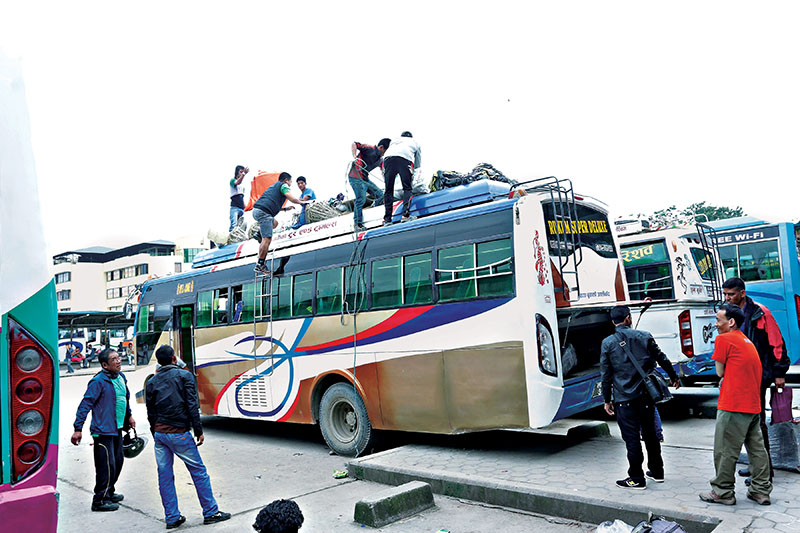Report highlights dangers of overloading vehicles
Kathmandu, May 19
Overloading of freight vehicles has detrimental effects on roads and causes premature surface deterioration which call for early maintenance, overlaying and rehabilitation, says a report.
The report on ‘Road Transport Safety and Axle Load Control Study in Nepal’ published by the Department of Transport Management said overloading also caused road accidents, leading to loss of lives and properties. Yet another factor in consideration can be the premature aging of vehicles causing financial loss to the truck owner.
“In addition, the fumes of unburnt fuel emitted by overloaded trucks pose a great threat to public health. Overloading may also cause slowing down of vehicles which results in traffic congestion on the roads,” it said.
Overloading helps truckers and operators to save on transportation costs and maximise their profits
Most of the transport vehicles in Nepal are two-axle rigid chassis and constitute about 75 per cent of the total fleet of freight vehicles. Overloading of trucks is a common scene on the roads and it is not surprising to find heavy vehicles with high tyre pressures and carrying as high as 18 to 20 tonnes axle loads against the legally permissible Gross Vehicle Weight of 16.2 tonnes. There are also standards available of size, weight and dimensions of the truck as specified by manufacturers’ specification but these are, in general, not largely followed.
“The practice of overloading cannot be overcome through rules regulations alone, but it can be reduced, if not totally stopped, by making all stakeholders aware. For this a strong and effective public awareness campaign has to be devised. Public awareness concept has been drafted to fulfil these objectives,” said the report.
Trucks carry loads much in excess of legal limits and are largely responsible for poor road conditions. Very huge capital investments are needed to upgrade and rehabilitate road networks to make them capable of withstanding high stresses and tyre pressures caused by heavy wheel loads.
“It is now very urgent to take specific precautions to minimise the effects of overloading. One way is to make sure that pavements are designed using a realistic assessment of the expected traffic loading. The other option is to enforce the legal axle limits to obtain increased pavement’s service life and performance,” the report suggested.
Most of the truckers in Nepal are small time business people who have small fleets of one or two trucks and don’t have the benefit of economy through numbers. A trucker who has to meet delivery schedules has no option but to overload. On the other hand transporters also tend to overload to enhance their profits by economising on the cost of transportation and to meet the schedules with a smaller rolling stock fleet. Overloading helps the truckers and operators to save on transportation costs and maximise their profit.
“Also, to meet schedules the driver tends to overspeed. Overspeeding an overloaded vehicle is a potent recipe for serious accidents. It is found that truckers put profit before safety when resorting to overloading,” it warned.
Keeping in mind these issues, the DoTM is preparing to install portable transport scale systems on the national highways and the transits of Kathmandu Valley to check overloading. It will be operated by a joint mechanism of DoTM and traffic police, said officials.






